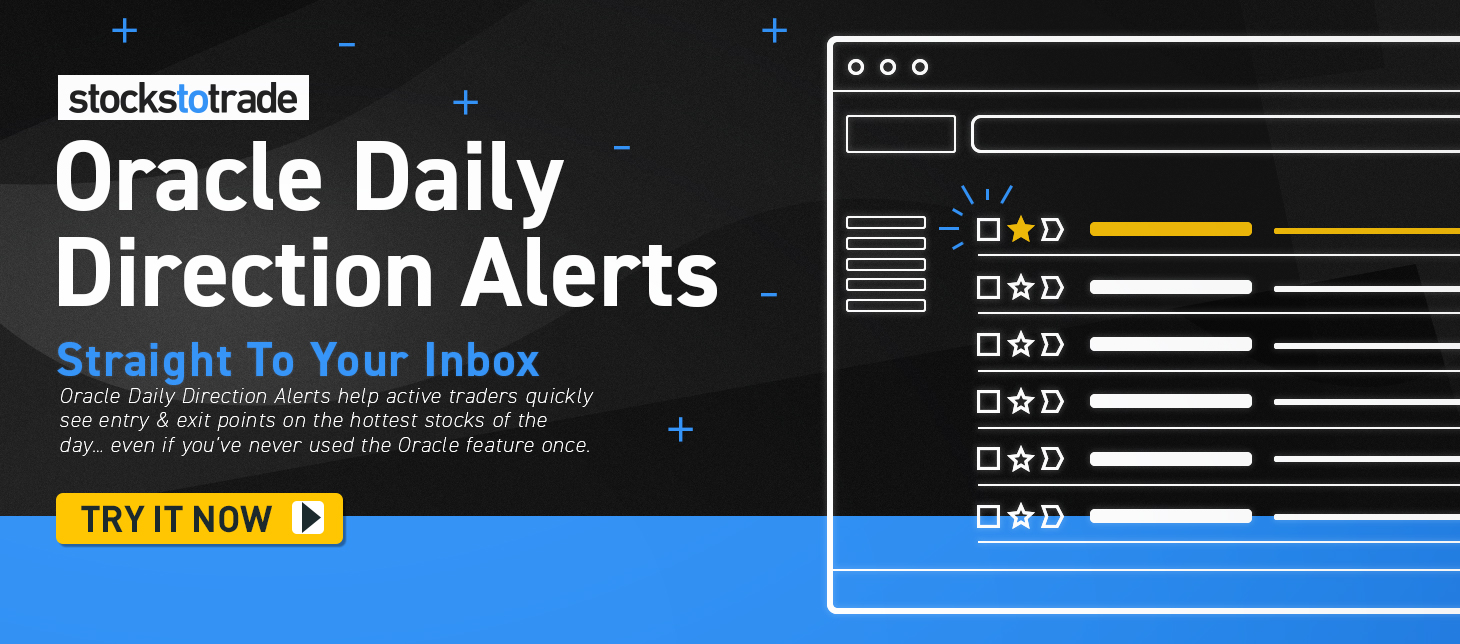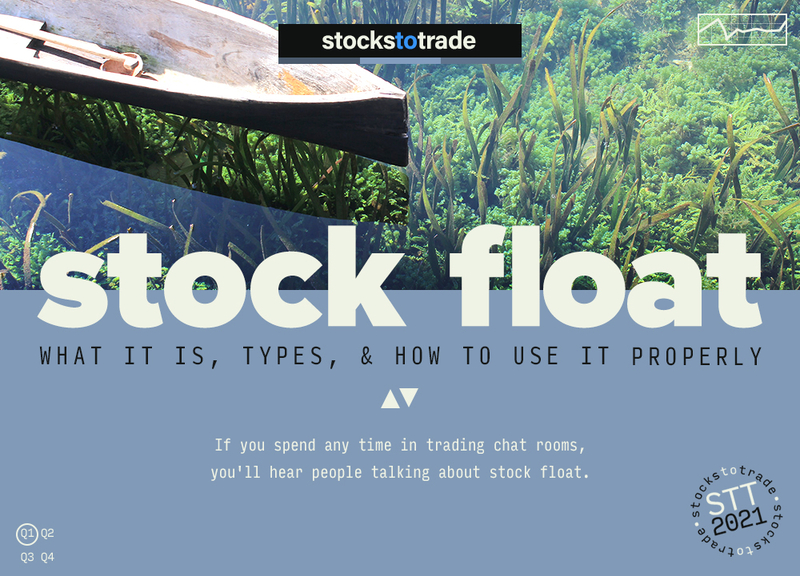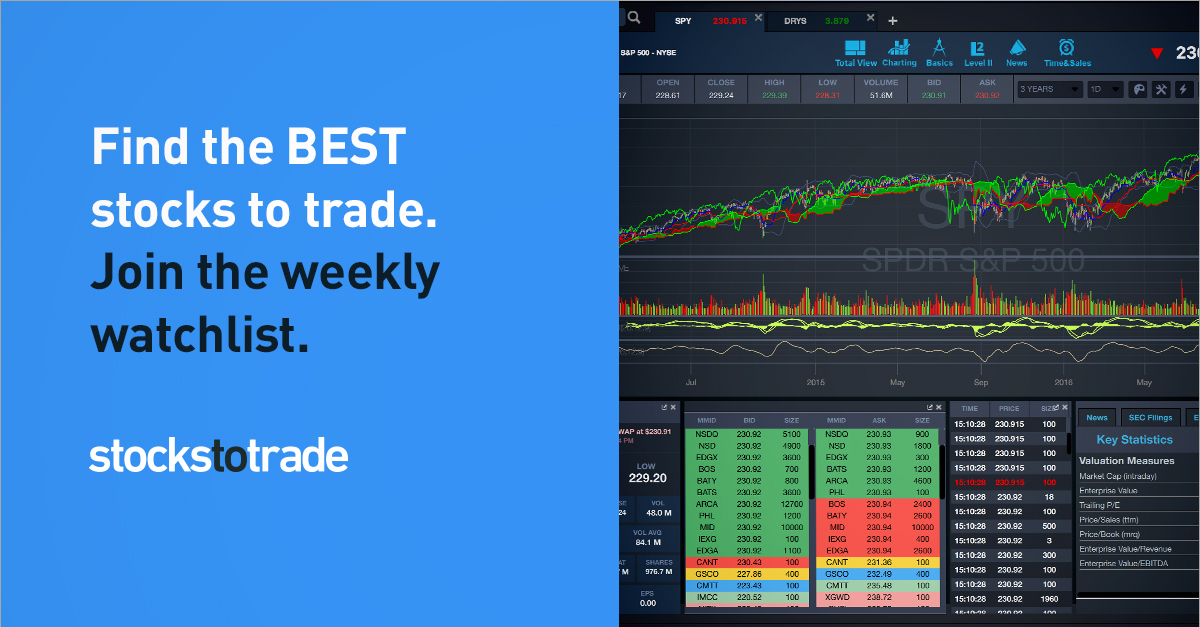If you spend any time in trading chat rooms, you’ll hear people talking about stock float.
Getting started with day trading can be the beginning of an exciting and potentially rewarding journey. The jargon can be a little challenging at first, though.
A lot of new traders struggle with understanding what stock float is.
Then there’s the fact that some traders prefer low float stocks, while others prefer high float stocks.
Today we’ll dive into it all. I’ll tell you the definition of stock float…
And we’ll break down the difference between high and low float stocks. Like everything in life, each comes with upsides and downsides.
It’s all about knowing which kind better suits your style. So let’s get to it!
Table of Contents
- 1 What Is Stock Float?
- 2 Why Is Stock Float Important?
- 3 How Does Float Operate?
- 4 How Can a Company Float?
- 5 Stock Float vs. Shares Outstanding
- 6 Volume vs. Float
- 7 Types of Stock Float
- 8 How to Determine Stock Float
- 9 How to Find a Stock’s Float
- 10 How to Trade Considering Stock Float: Top 3 Tips
- 11 What Is a Good Stock Float?
- 12 Conclusion
What Is Stock Float?
It’s the number of outstanding shares a company issues minus restricted shares.
Insiders, like company directors and executives, get special access to restricted shares. After that, the rest of the shares become available to public investors.
The public float is traded by institutions and retail traders like you and me.
Stock float is the number of shares left for everyday traders like you and me and investors in the public market. It’s our piece of the company’s pie.
Why Is Stock Float Important?
Stock float affects a company’s share price on a daily basis.
It’s the supply in supply and demand. Without a limited supply of shares, it would be hard for traders and investors to determine value.
Stock float allows companies to raise cash for things that enhance their value. These things include capital expenditures, infrastructure, and other strategic investments.
The money investors put into a company creates value through market capitalization. That’s also known as market cap.
Market cap is the total number of shares available plus the price per share at any given time.
That can sound like a lot of jargon, I know. But hang in there with me — this is useful to know.
Knowing this can help you separate the small caps from the medium and the large caps. The smaller the cap, the greater the volatility.
Small caps are also called low float stocks because their stock float has fewer shares to go around. These are the volatile stocks that most of my students play in the SteadyTrade Team.
The SteadyTrade Team is where you can learn the market ropes. With hands-on twice-daily mentorship, you can find the best strategy for you in any market. Sign up today!
And when you’re ready to scan for the stocks that fit your strategy, check out StocksToTrade. You get access to beautiful charts, built-in scanners (even for OTCs), indicators, news feeds, and much, much more. Check it out with a 14-day trial for just $7 today!
 How Does Float Operate?
How Does Float Operate?
The float is a flexible way of providing value to a company as well as its shareholders.
One instance where this plays out is through initial public offerings (IPOs). Insiders hold on to their shares during what’s called a lock-up period.
This gives the company time to establish a price, rather than having insiders cash out as soon as possible.
Prices usually pop right at the open for IPOs. Recent examples of that include DoorDash Inc. (NYSE: DASH) or Airbnb Inc. (NASDAQ: ABNB).
When insiders get the green light to sell their shares, the public float increases. This can make the share price drop in the short term. A good company will bounce right back, though.
Keeping an eye on the stock float can help you predict a stock’’s direction.
When you know how much of the stock float insiders have, you can keep an eye on events that could affect the share price.
For example, if insiders own 25% of the float shares, it’ll affect the stock price when they sell. If they own 50% of the stock float, the impact will be even greater.
There are many ways a company can influence its share price.
It can issue more shares than are already in the market, causing share dilution.
Diluted shares can lower the stock price. If the company’s hot, though, the impact is a blip.
That’s why I like to stick with hot sectors. They’re more likely to inspire a buying frenzy no matter what happens to the stock.
Want to know what I’m watching each day? Join my daily live premarket sessions on Instagram every weekday. I go over my top watchlist picks before the market opens. It’s a great way to kick off the trading day. See you there!
How Can a Company Float?
Well, I guess it doesn’t literally float, since we’re talking about digital paper here.
The float is flexible, though. Companies have the ability to increase or decrease the number of float shares in the market.
We spoke about diluted shares earlier. Companies can also do the opposite. When companies want to reduce the size of the pie, they can buy back shares. This creates scarcity in the public float supply. The lower the stock float, the more impact demand can have on the stock price.
If people buy the stock for good reasons, this isn’t really a problem. Sometimes, though, people buy the stock because of all the hype going around. And then there’s the fear of missing out (FOMO).
It’s important to know why people are buying into the stock float when you choose your entry and exit prices.
Companies can also do reverse stock splits.
In a reverse stock split, float shares might go from five to one, making the stock price higher and less available. For example, if a stock cost $20 before the reverse split and you owned five shares, you’d now own one share valued at $100.
The value stays the same — in theory. But the change in price has a psychological impact on traders.
Enhancing the perception of value is not as good as increasing the actual value of a company. But sometimes, it’s the only shot a company has.
You might see this with sketchy penny stocks that are trying to not look like sketchy penny stocks.
Why Float a Company?
A company’s float is like a retail store’s inventory. You need a set number of items, or shares, to control. This helps buyers and sellers assign value to something.
The way you can influence the price of that inventory is by buying or selling float shares in the public market.
If there aren’t enough buyers, the price of the stock float goes “on sale.” Sometimes a whole sector will go on sale. Often it’s the cyclical stocks that do this.
They tend to do well during bull markets. When things are good, they soar. But in a bear market, when things are trending down, they drop.
Non-cyclical stocks, also known as defensive stocks, are the opposite. They do better in bear markets.
Defensive stocks include utilities, healthcare, and consumer staples. Think things you need no matter what. Because they’re always needed, they’re less volatile. I don’t tend to pay these stocks much mind unless a catalyst can help them outperform.
So what’s the difference between the float and shares outstanding?
First, let’s start with authorized shares. When a company gets created, it must come up with a total count of available shares. That said, it doesn’t have to issue all those shares at once.
Outstanding shares are the total number of shares available to buy and sell. This includes the restricted shares we talked about earlier as well as the public float.
The float is the number of available shares in the public market. Remove restricted shares from the equation and you end up with the stock float.
Who’s in control of the shares can ebb and flow over time. Sometimes it’s the insiders, and sometimes it’s the institutional investors or retail traders.
Volume vs. Float
Volume vs. float … which is more important?
The truth is they both are. And one affects the other.
The more volume that comes into play, the more demand there is for the stock.
Remember, the float is the set number of shares available to the public. So what happens when a lot of people want to buy the same stock? You get some good float rotation going and you have yourself a liquid stock.
The perfect stew comes from a low float stock with high volume and a significant number of short sellers…
If the stock is popular enough, more buyers enter the market than expected. Short sellers must then buy to cover, and longs get the gift of a classic short squeeze.
Stocks can go up 100% or even 1,000% or more intraday. Be careful with the trading halts, though.
Types of Stock Float
The type of float shares you trade can potentially have a big impact on the returns you make. This depends on your starting capital, though.
Traders who start out with less capital tend to prefer low float stocks. I’ll show you why in a minute.
Those who have a larger amount of capital to start with tend to prefer high float stocks.
Low Float Stocks
Most students in the SteadyTrade Team start out with low float stocks. The growth potential is higher with a low public float.
Let’s take a look at what makes these stocks so powerful.
What’s Considered a Low Float Stock?
The general consensus among traders is 10 million to 20 million float shares.
I’ve always been pickier about it. I’ve made 10 million a hard limit. The volume in 2020 forced me to reconsider, though. If you have enough volume, stocks with a higher float can still rocket.
Speaking of rockets … check out our new Small Cap Rockets alert service. Three six-figure traders send you easy-to-read trade alerts with entry and exit points and key market insights.
 How Do You Know If a Stock Is Low Float?
How Do You Know If a Stock Is Low Float?
When you start out trading, you’ll have to check the public float spec before you know what you’re seeing.
After a while, you’ll be able to recognize them by their speed and outsized percentage gains.
Some traders spend most of their trading time on low float stocks. They’re definitely worth learning about.
How to Find Low Float Stocks
To find low float stocks, it helps to have a powerful trading platform with a great scanner. Call me biased, but I think StocksToTrade is the best way to find low float stocks.
Some very profitable low float stock traders designed it — and still use it to this day.
It pairs beautiful and intuitive design with custom-built scanners that are easy to use. And it integrates with many brokers.
But don’t take my word for it. You can only learn from your own experience. Check it out with our offer — a 14-day trial is just $7!
How to Trade Low Float Stocks
The most important thing to start with is the right mindset. When float shares are low, volatility is high.
If you don’t bring your A game, your emotions will get in the way. You can get stopped out, revenge trade, or even risk blowing up your account.
Get your head straight first, then get in the game. If you ask me, slow and steady wins the race, even in the land of low-priced stocks.
That’s my old-man wisdom for you from decades of practice.
High Float Stocks
High float stocks are the big names you hear of every day.
They’re the large-cap listed stocks that dominate the news. And they’re popular because they tend to be safer than low float stocks.
What Is a High Float Stock?
High float stocks have a high public float.
Remember that low float stocks have between 10 million and 20 million float shares … or fewer.
High float stocks are anything above that.
Of course, you’re gonna experience some mid-range float shares above 20 million. Then you get to the big dogs.
Take Tesla Inc. (NASDAQ: TSLA). It’s got 948 million float shares! If you think that’s crazy, Apple Inc. (NASDAQ: AAPL) has 17 billion.
How to Find High Float Stocks
StocksToTrade is as good for high float stocks as it is for small float stocks. I use it for both.
Any scanner of your choice will do, though. A decent trading platform will let you filter your scans by the number of float shares you’re looking for in a stock.
How to Trade High Float Stocks
Stocks with a high public float can be easier to trade than stocks with low float shares. They’re usually less volatile, but they tend to have higher share prices.
If you don’t mind going at a slower pace and you have more capital to trade with, they’re the better option. They tend to be more stable and help lessen the risk in your trade.
High float stocks are a little easier to predict as well. Especially around earnings season. Remember to always wait until after earnings reports to buy in for a great swing trade.
How to Determine Stock Float
The key thing to remember as a trader is that you’re looking for the public float.
Outstanding shares include the number of restricted shares a company issues. You won’t have access to those.
How to Find a Stock’s Float
To find the public float of any company you want to trade, find the list of specs in your trading platform.
It’s always one of the key items listed next to things like “volume” and “average true range” (ATR).
How to Trade Considering Stock Float: Top 3 Tips
- Put in a lot of screen time. After a while, you’ll see the same stocks run again and again. It’s good to get to know them over time.
- Always check the volume and the public float as soon as you find a stock with breaking news. Both things impact the pace of a stock’s movement. It’s good to find a rhythm that works for you.
- My favorite setup is the afternoon VWAP-hold high-of-day break. I talk about this pattern all the time. Low float stocks are risky. Seeing if the momentum lasts into the afternoon can potentially take some risk off the table.
What Is a Good Stock Float?
A good float is one that fits your budget and your desired pace in the market. That’s the long and short of it. It all depends on you.
If you have a smaller account and love fast-paced stocks, you might want to go for low float stocks.
If you have a larger account and your mantra is “slow and steady wins the race,” stick with high float stocks.
Conclusion
Float is one of the most important considerations when placing a trade. I hope this guide has been helpful to you.
Being of service is one of my core values. If it’s one of yours too and you have a friend who’s new to trading, please share the knowledge.
“What is a good stock float?” should be a question every trader knows the answer to.
So how about you? Do you find that you trade better when a stock has a certain number of float shares? Let us know in the comments below.



